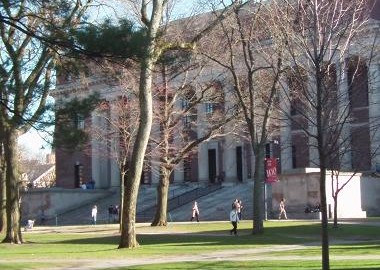What You Can Learn From Students for Fair Admissions v. Harvard
A case in U.S. District Court in Boston that has garnered much attention in the general press and especially in academic circles is Students for Fair Admission, Inc., v. President and Fellows of Harvard College. Simply put, the plaintiff asserts that Harvard intentionally discriminates against Asian American applicants and engages in racial balancing, which, if true, are violations of federal civil rights laws. Harvard denies this and responds that their undergraduate admissions process entails holistic assessments of applicants as part of the institution’s mission to achieve diversity in the student body, a condition which Harvard considers an essential element in each student’s education.
This case is considered to be the latest in the decades–old history of Affirmative Action as a component of American law. Whatever the judge decides in this case, observers expect the matter to eventually wend its way through the appeals process until it lands on the U. S. Supreme Court’s docket.
Rather than consider the pros and cons of Affirmative Action or the merits of this particular case, in this post we’ll focus on the insider’s perspective that the trial has afforded into the undergraduate admissions procedures of Harvard. Testimony and other evidence that were revealed in court provide us with information that has heretofore been as closely guarded as trade secrets. This information gives us added insight into Harvard’s admissions process and it can be extrapolated to apply, with variations, to the admissions processes of other highly selective private institutions in the U.S.
IvySelect consultants have long advised students that an excellent academic record is essential to admission but that acceptance is offered to applicants who also perform well on “soft” admissions factors such as extracurriculars, essays, letters of recommendation, legacy status, diversification attributes, exceptional talents like athletic ability, and similar considerations. This trial has confirmed that our understanding of Harvard admissions is correct. In addition, it has provided us with details concerning the internal procedures of Harvard’s admissions office.
Earlier this year, Harvard culled through 42,749 applications to select 1,962 students (4.6%) for acceptance into the Class of 2022. With such application volume, giving each applicant a thorough review is difficult. According to Nick Anderson of the New York Times, the following is how Harvard accomplished this task, based primarily on court documents and testimony from William R. Fitzsimmons, Harvard’s dean of admissions.
“First, the applications are divided among 20 groups, called dockets. California has three dockets, labeled A, C and Z. Texas gets Docket D. Virginia, Maryland, Delaware and the District of Columbia supply Docket I.
“A subcommittee of four or five admissions officers will read a given docket’s files. A reader will comb through essays, transcripts, test scores, recommendation letters and other information, including race or ethnicity, if disclosed. Then the reader fills out a summary sheet with comments and ratings on a scale of 1 to 4 (1 being highest; pluses and minuses optional) across four “profile” categories: academic, extracurricular, athletic and personal. The personal category is meant to evaluate traits such as leadership and character. The reader will also give a preliminary overall rating, which is a judgment call, not an average of the other marks.
“Some files are given to a second reader within the subcommittee, for a second set of ratings. A professor might read a file, too, if the applicant shows depth in performing arts or special talent in a field such as math. Alumni interviewers send their reports. Then the subcommittees meet, review files and vote on recommendations.
“From there, files go to the full 40-person admission committee. Cases are weighed. Recommendation lists are pared down. The committee votes on final decisions.”
Applicants receiving an academic rating of 1 or 2 represent 42% of the total, but fewer than 25% are rated that high due to non-academic factors such as extracurriculars, athletics, or personal qualities.
What Harvard terms as “tips,” which add positively to an applicant’s profile, are vitally important to admissions. Among the reasons for earning a tip are creative ability, athletic talent, and legacy status. Data show that the admission rate for domestic legacy applicants is 34%, compared to 4.6% for applicants in general. Children of Harvard’s faculty and staff also get admitted at higher than normal rates.
There are additional tips that Harvard uses to assemble a socioeconomically, geographically, and racially diverse class. Children from low-income families get a boost, as do African American, Hispanic, and rural applicants. Harvard says race can be a plus for Asian American applicants, too. The institution says race is only one factor among many and is never a negative factor in admissions.
The admissions office also maintains a “dean’s list” with applicants of special note. Hundreds of names get on these lists each year. Some are children of donors. The admission rate for those on the list is 42%, which is well above the average of 4.6%.
The most disputed element among admissions factors at Harvard is the “personal rating”. The plaintiff alleges that their race is detrimental to Asian Americans even though race itself is never weighed as a discrete factor. Harvard is accused of knowingly discriminating against Asian Americans through the personal rating because it assesses character through traits such as “courage” and “likeability”, as gleaned from interviews, essays, and recommendations. Due to the dominant methods of upbringing associated with different racial groups, plaintiff alleges, Asian Americans are rated as so similar in character that they harm their ability to serve the University’s goal of student body diversity. For example, many Asian Americans are rated as more studious, non-demonstrative, introverted, and reluctant to assume leadership roles than their peers. As summed up in the Los Angeles Times, “Harvard University intentionally uses a vague “personal rating” to reject Asian-American applicants in favor of students from other racial backgrounds…”
IvySelect, as a college admissions consulting firm specializing in elite institutions, has assisted students in gaining admission to Harvard and the other seven Ivy League schools. In addition, we have been successful in guiding students to admission at elite national universities such as MIT, Chicago, Caltech, Stanford, Georgetown, Duke, NYU, Northwestern, Berkeley, Michigan, Virginia, Johns Hopkins, Washington University of St. Louis, North Carolina, Vanderbilt, and others. We have also assisted students in gaining admission to top-tier national liberal arts colleges such as Amherst, Williams, Smith, Swarthmore, Middlebury, Wellesley, Vassar, Bowdoin, Hamilton, Colgate, and others.





